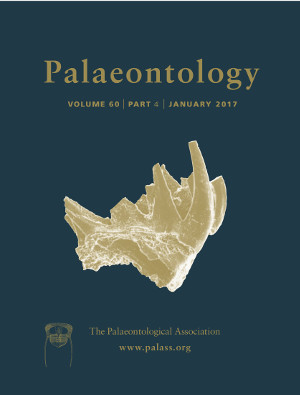Reg. Charity No. 1168330

Upper Maastrichtian to lower Paleocene, coarse‐grained deposits of the Lefipán Formation in Chubut Province, (Patagonia, Argentina) provide an opportunity to study environmental changes across the Cretaceous–Palaeogene (K–Pg) boundary in a shallow marine depositional environment. Marine palynological and organic geochemical analyses were performed on the K–Pg boundary interval of the Lefipán Formation at the San Ramón section. The palynological and organic geochemical records from the San Ramón K–Pg boundary section are characteristic of a highly dynamic, nearshore setting. High abundances of terrestrial palynomorphs, high BIT‐index values and the occasional presence of plant fossils are indicative of a large input of terrestrial organic material. The organic‐walled dinoflagellate cyst (dinocyst) assemblage is generally dominated by Senegalinium and other peridinioid dinocyst taxa, indicative of high‐nutrient conditions and decreased salinities, probably associated with a large fluvial input. The reconstructed sea surface temperatures range from 25°C to 27°C, in accordance with the tropical climate inferred by palynological and megafloral studies. As in the Bajada del Jagüel section, ~500 km north‐north‐east of San Ramón, peaks of Senegalinium spp. were recorded below and above the K–Pg boundary, possibly related to enhanced runoff resulting from more humid climatic conditions. The lithological, palynological and organic geochemical records suggest the occurrence of a sea‐level regression across the K–Pg boundary, resulting in a hiatus directly at the boundary in both sections, followed by a transgression in the Danian.